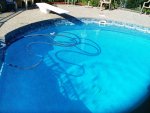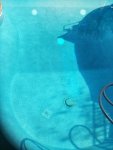Well.. Automation would be great of course However I have been manually operating my valves to achieve better skimming this year and it has made a huge difference.
I guess I should have stated...automation is required if you want to do things automatically haha. I'm pretty lazy and would could never commit to changing valves manually. But with regards to your stated benefits of making those changes, Rich, you are exactly right. I see the same advantages you do.
For both you and @PaigeMark - a heater bypass would be beneficial for a few reasons.
Gene's "heater bypass" is one of the four valves I was thinking about and precisely for the reasons he stated. But I don't have a heater on my system.
Here are the other three I would recommend, but I believe some on the boards think of me on the fringes of this issue....haha. I am obsessed with energy efficiency and IFCS effectiveness.
1) Waterfall Actuator (1) No brainer and no controversy...figure out where you need to put a valve to run your waterfall automatically. I had one for 25 years and never used it because it required manually going back there to change the valve. In addition, due to the way it was implemented, it always had a green pool of algae in its basin because there was not a way to regularly run chlorinated water through.
Actuators (2) & (3) would control your suction and return valves to the pool as follows. This ties into what Rich said. For cleaning using the IFCS, set the suction valve to FULL bottom drain and the return to FULL popup system. Adjust your pump (through trial and error over a period of weeks/months) to the lowest RPM (and PSI) that it can run and still clean the pool to your satisfaction. This is the spot at which your pool IFCS system is most energy efficient. Run it 2-3 hours a day (more or less TBD) to "clean" your pool
At other times set those valves so that FULL suction comes from the skimmer and FULL returns goes to that "single jet" you discovered. These would be the positions for "low RPM filtering/skimming/chlorinating". You would run your pump 6-8 hours a day at low 1200-1500rpm to accomplish those tasks. It is almost free to run your pump at those low rpms. BUT, if the returns are forced through the popups, it will not be as "free" or as energy efficient. My popups introduce quite a bit of "head" to pump operation...at the same rpm, there is a significant difference in the gpm forced through the popups vs what can be returned through the "wall returns". Yours may be different. On the suction side, at the skimmers work much better (with full draw) and there is less "head" introduced into the system as well.
The (4th) valve and actuator, as Gene talked about, would allow you to bypass the heater, reducing the PSI throughout the system during both cleaning and skimming times. More Efficient!






